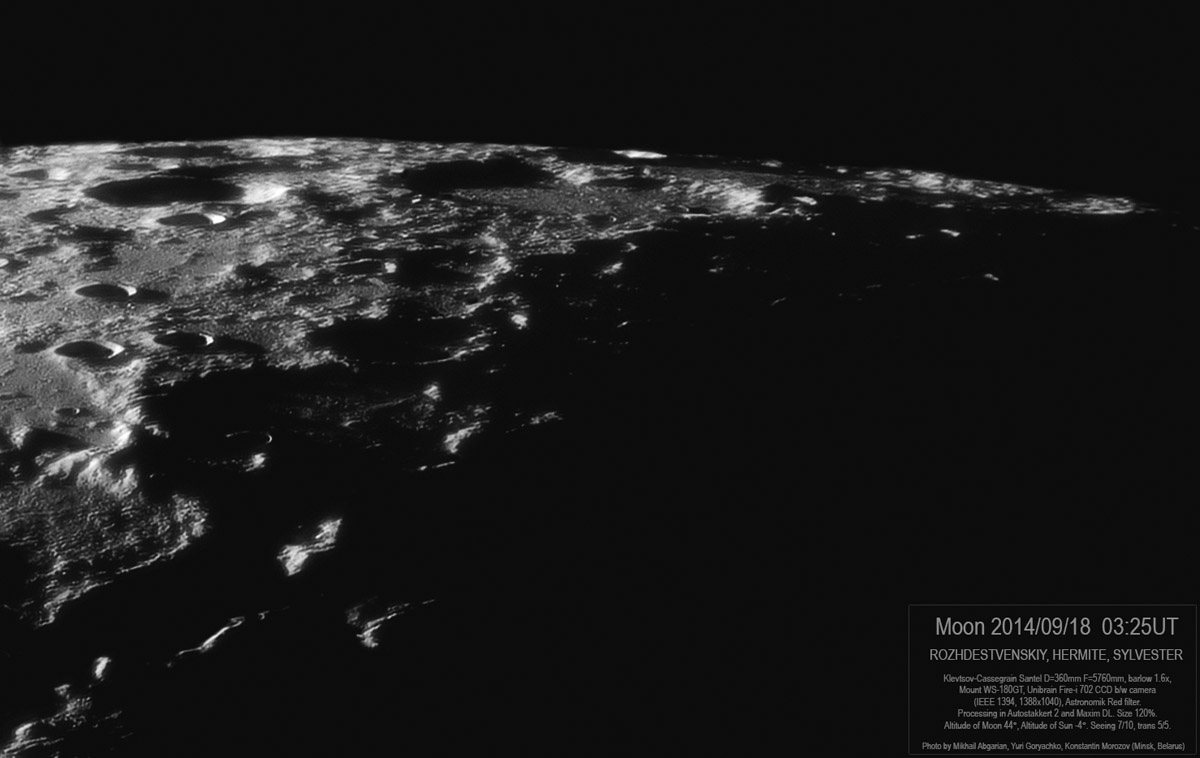Difference between revisions of "September 20, 2014"
| Line 1: | Line 1: | ||
__NOTOC__ | __NOTOC__ | ||
=Over the Pole And in the Hole= | =Over the Pole And in the Hole= | ||
| − | |||
<!-- ws:start:WikiTextHeadingRule:0:<h1> --> | <!-- ws:start:WikiTextHeadingRule:0:<h1> --> | ||
<!-- ws:start:WikiTextLocalImageRule:6:<img src="/file/view/LPOD-Sep20-14.jpg/523034812/LPOD-Sep20-14.jpg" alt="" title="" /> -->[[File:LPOD-Sep20-14.jpg|LPOD-Sep20-14.jpg]]<!-- ws:end:WikiTextLocalImageRule:6 --><br /> | <!-- ws:start:WikiTextLocalImageRule:6:<img src="/file/view/LPOD-Sep20-14.jpg/523034812/LPOD-Sep20-14.jpg" alt="" title="" /> -->[[File:LPOD-Sep20-14.jpg|LPOD-Sep20-14.jpg]]<!-- ws:end:WikiTextLocalImageRule:6 --><br /> | ||
| − | <em>image by [mailto:astronominsk@gmail.com Yuri Goryachko], Mikhail Abgarian, Konstantin Morozov, Minsk, Belarus</em><br /> | + | <em>image by [mailto:astronominsk@gmail.com" rel="nofollow Yuri Goryachko], Mikhail Abgarian, Konstantin Morozov, Minsk, Belarus</em><br /> |
<br /> | <br /> | ||
| − | Just beyond the North Pole is the broad-floored crater Hermite, with <span style="font-size: 12.7272720336914px;">Rozhdestvenskiy's far, shadowed rim, cut by a bright-rimmed crater (Roz. K),</span> on the limb. K is the deepest hole in this scene, being about 3.9 km below the mean lunar elevation. Two similar-sized craters, Sylvester and Lovelace, are to the left of Hermite - LRO's [http://bit.ly/1r8DOko QuickMap] identifies each of these features (and provides depths). Left of center in the foreground is Mouchez, with only a few pin-pricks of illuminated hills catching the light. The steep angle of observation means that little geologic interpretation can be made other than identification of younger impact craters by their crisp and bright rims. But seeing beyond the pole with such a low Sun is a rare pleasure for which I thank <span style="font-size: 12.7272720336914px;">Yuri and the Astronominsk team.</span><br /> | + | Just beyond the North Pole is the broad-floored crater Hermite, with <span style="font-size: 12.7272720336914px;">Rozhdestvenskiy's far, shadowed rim, cut by a bright-rimmed crater (Roz. K),</span> on the limb. K is the deepest hole in this scene, being about 3.9 km below the mean lunar elevation. Two similar-sized craters, Sylvester and Lovelace, are to the left of Hermite - LRO's [http://bit.ly/1r8DOko" rel="nofollow QuickMap] identifies each of these features (and provides depths). Left of center in the foreground is Mouchez, with only a few pin-pricks of illuminated hills catching the light. The steep angle of observation means that little geologic interpretation can be made other than identification of younger impact craters by their crisp and bright rims. But seeing beyond the pole with such a low Sun is a rare pleasure for which I thank <span style="font-size: 12.7272720336914px;">Yuri and the Astronominsk team.</span><br /> |
<br /> | <br /> | ||
| − | <em>[mailto:tychocrater@yahoo.com Chuck Wood]</em><br /> | + | <em>[mailto:tychocrater@yahoo.com" rel="nofollow Chuck Wood]</em><br /> |
<br /> | <br /> | ||
<strong>Technical Details</strong><br /> | <strong>Technical Details</strong><br /> | ||
Revision as of 22:04, 4 January 2015
Over the Pole And in the Hole

image by " rel="nofollow Yuri Goryachko, Mikhail Abgarian, Konstantin Morozov, Minsk, Belarus
Just beyond the North Pole is the broad-floored crater Hermite, with Rozhdestvenskiy's far, shadowed rim, cut by a bright-rimmed crater (Roz. K), on the limb. K is the deepest hole in this scene, being about 3.9 km below the mean lunar elevation. Two similar-sized craters, Sylvester and Lovelace, are to the left of Hermite - LRO's " rel="nofollow QuickMap identifies each of these features (and provides depths). Left of center in the foreground is Mouchez, with only a few pin-pricks of illuminated hills catching the light. The steep angle of observation means that little geologic interpretation can be made other than identification of younger impact craters by their crisp and bright rims. But seeing beyond the pole with such a low Sun is a rare pleasure for which I thank Yuri and the Astronominsk team.
" rel="nofollow Chuck Wood
Technical Details
September 18, 2014, 03:25UT.
Klevtsov-Cassegrain Santel D=360mm F=5760mm, barlow 1.6x,
Mount WS-180GT, Unibrain Fire-i 702 CCD b/w camera
(IEEE 1394, 1388x1040), Astronomik Red filter.
Processing in Autostakkert 2 and Maxim DL. Size 120%.
Altitude of Moon 44°, Altitude of Sun -4°. Seeing 7/10, trans 5/5.
Related Links
21st Century Atlas chart L8.



